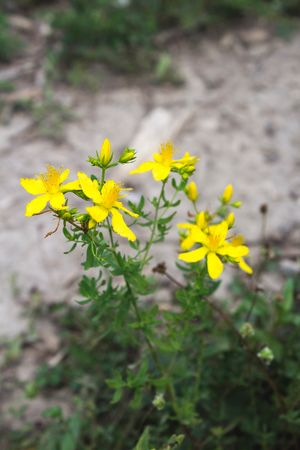ID & info

Hypericum perforatum (perforate St John's-wort) is one of my favourite plants to learn about, and is a very powerful medicinal plant with many applications. I was absolutely stunned at the results of my dye experiments both in 2020 and 2021. I was able to harness 4 different colours from the roots, leaves/stems, and flowers of this plant.
St John's-wort is hiding in sunny meadows, and particularly likes gravelly areas like roadsides and railways. Notice the little dots or 'perforations' on the leaves and edges of the flower petals. St John's-wort is not indigenous to Turtle Island, and is often seen as a weed in farmers' fields, but let's welcome it into our hearts and consciousness and give it the love it deserves!









